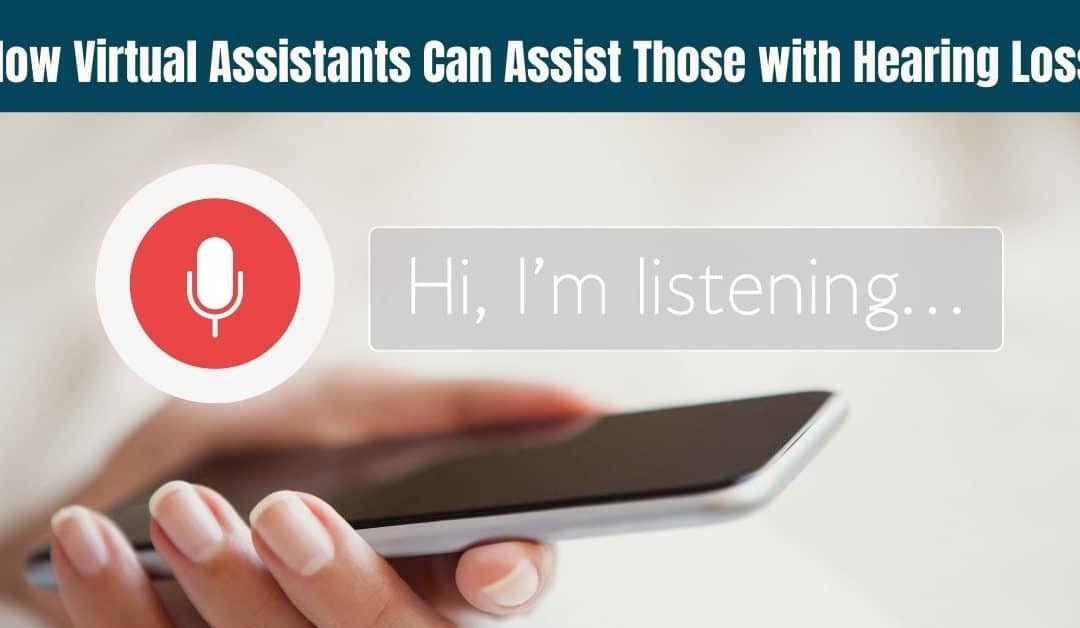Hearing loss is one of the most common chronic medical issues that people navigate. Hearing loss affects nearly 1 in 5 people, and it affects communication, which is a major way we navigate and understand the world. The most common treatment for hearing impairment is new hearing aids, which incorporate advanced technology to amplify and process sound. Hearing aids can significantly improve a person’s ability to hear in various environments.
Similar to most electronics today, hearing aids have experienced incredible innovation. Now more than ever before, hearing aids have a range of features and technologies that allow them to easily integrate in daily life, creating optimal listening experiences. The most recent innovation focuses on incorporating virtual assistant technology, including smartphone’s virtual assistant, to provide seamless connection.
New Hearing Aids Innovations
According to the National Institute on Deafness & Other Communication Disorders, nearly 29 million people could benefit from using hearing devices such as hearing aids. Hearing aids improve hearing health, which has numerous positive outcomes on overall health and wellness, including improved cognitive function. These devices are smaller and more advanced than ever, offering numerous features that support daily life. Bluetooth connectivity is one of the most significant innovations that has drastically enhanced hearing aids. In 2014, the first made-for-iPhone hearing aids were introduced to the market, radically changing the industry. Since its debut, nearly all hearing aids now have Bluetooth features.
Bluetooth technology allows hearing aids to wirelessly connect to other devices like your smartphone. This includes phone calls, allowing users to communicate more effectively through wireless connections. This allows hearing aids to stream audio from your phone (or speaker, laptop, etc.) directly to your hearing aids. Wireless connectivity sharpens sound quality and creates a more integrated experience while doing activities like talking on the phone, watching television, listening to music, etc. Bluetooth technology has created even more possibilities for integrated hearing aid connectivity. Hearing aid manufacturers have introduced features like accessing and using virtual assistants, which provide even more support! This integration is part of a larger trend in digital transformation, where virtual assistance plays a crucial role in enhancing operational efficiency across various sectors.
What Are Virtual Assistants?
Virtual assistants are voice-based technology that are designed to provide convenient digital support. They work by using artificial intelligence (and machine learning) to recognize a person’s speech and perform a specific task that is communicated vocally. With a simple voice command, these assistants can perform tasks like setting reminders and making phone calls. The primary purpose of virtual assistants is to answer questions and apply commands like pulling up a specific app, getting directions, making a phone call, playing a song, etc. Popular examples that you may regularly interact with include:
- Apple’s Siri
- Microsoft’s Cortana
- Amazon’s Alexa
- Google Assistant
Virtual assistants are designed to make interacting with your devices easier and convenient. Customizing a virtual assistant’s voice can significantly enhance clarity and accessibility for individuals with hearing loss. Hearing aids can utilize Bluetooth technology to connect to your smartphone and access its virtual assistant. Currently, manufacturers of hearing aids are now starting to integrate virtual assistant technology with hearing aids to offer this easy way of interacting with your device, as virtual assistants respond to voice commands.
Virtual Assistants & Hearing Aids
There are five major manufacturers of hearing aids, and three have recently introduced virtual assistant technology. In the first phases of this technology, the version of virtual assistants specifically for hearing aids are not intended to replace Siri, Cortana, Alexa, etc. Rather, they are currently meant to offer information and assistance specific to your hearing aid device. They specialize in providing details about battery life, settings, programs, and other questions that you may have about your hearing aids. These virtual assistants can also provide customer support by answering questions and offering guidance on using the hearing aids. They can also process general questions that are not related to hearing aids, which are fielded differently. This feature offers numerous benefits, including:
- Easy access to device controls and settings
- Quick responses to questions about the device
- Readily switch settings on hearing aids
- Location and navigation support
These benefits enhance the overall user experience and simplify communication in our increasingly digital lives. This is particularly important and useful for older adults who are disproportionately impacted by hearing loss. Older adults who may live in senior living communities or rely on support from family members can significantly benefit from this technology, which can provide specialized attention and support. Virtual assistant technology can help people with hearing loss live more independently and engaged. Additionally, virtual assistants can help manage administrative tasks, allowing users to focus on more important activities. This contributes to better mental, social, and physical health and improves quality of life and overall happiness.
If you are interested in this evolving and exciting technology, contact us to learn more!

